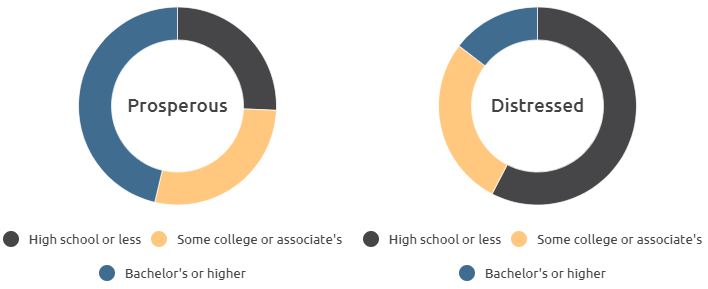Section Branding
Header Content
REPORT: Atlanta's Economic Divide Deepens
Primary Content
An Atlanta community ranks as one of the most economically distressed in the nation, according to a report released by the Economic Innovation Group.
The Distressed Communities Index looked at Census Bureau Data from 2011 to 2015 and ranked 26,126 individual ZIP codes as either prosperous, comfortable, mid-tier, at-risk or distressed.
South Atlanta's 30315 ZIP code was near the bottom of the list and qualified as distressed. While the national poverty rate was 15.5 percent at the time of the study, more than 42 percent of residents in the 30315 ZIP code were below the poverty line.
The highest ranked Atlanta area ZIP code was 30319, with a 9.2 percent poverty rate. The area includes parts of Brookhaven and Sandy Springs.
You can explore the data yourself here to see how your area ranked.
Education was a considerable factor in explaining these disparities. In the distressed South Atlanta ZIP code, 77.2 percent of residents earned a high school diploma compared to 94.4 percent in the Brookhaven area. At the time of the study, 86.7 percent of people nationwide had earned a high school diploma.
Distressed areas saw a 22 percent increase in business establishments as compared to an 85 percent increase in prosperous ZIP codes.
Distressed areas in the South weren't mostly located in cities, though. Low-density areas accounted for nearly 59 percent of the region's distressed population, with high-density areas coming in at 7.9 percent.
Race also played a role in the analysis. Across the country, distressed communities had a disproportionally larger minority population compared to the national makeup.
The report found that black and Native American populations are more likely to live in a distressed community than in any of the other classifications.
Overall, the report concluded that while many communities flourished, "far too many" were left behind. Nearly 85 million Americans lived in a prosperous area, but about 52 million were in a distressed area.

